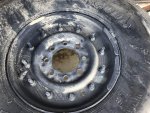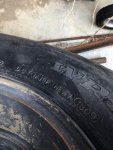Before replacing anything else, I suggest diagnosing the vibration. Drive the vehicle at 32mph and measure the disturbance frequency with a reed tachometer, a sirometer, an electronic vibration analyzer, the accelerometer in a smartphone, or some other device. Note the engine rpm and the gear the transmission is in while recording the disturbance frequency. Next, do a little math to determine the rotational speeds of all the major components (drivelines, wheels/tires, axle shafts, etc.) and correlate the disturbance frequency to the rpm of a rotating component. Next, perform some inspections and measurements on the components that you've correlated the disturbance frequency to.
If you don't want to manually calculate the speeds of the rotating components, look into Vibrate Software (vibratesoftware.com). Calculating the speeds is easy though. Take the engine rpm and divide it by the gear ratio of whatever gear you were in, and you have driveline speed (assuming minimal torque converter slippage). Take the driveline speed and divide it by the axle ratio and you have the speed of the axle shafts (and the tires and wheels if it isn't a HMMWV with geared hubs). If you have geared hubs, divide the axle shaft speed by the hub gearing ratio and you have tire/wheel speed. Next, try to match up the disturbance frequency to one of the speeds calculated above. If you measured the disturbance frequency in Hz, multiply by 60 to convert it to RPM to make matching it up easier. Make sure you look for multiples (or halves) when doing the matching to see if you have "second order" or higher vibrations. "First order" vibrations produce one disturbance per revolution of the component, such as an imbalanced driveline or tire. Second order disturbances (2 "shakes" per revolution of the component) are caused by non-balance issues such as out of round components, improper driveline working angles or phase, etc.
Once you've determined the rotating component(s) causing the disturbance, and the order of the vibration, do some measurements (lateral/radial runout of hubs and wheels, driveline angles and phasing, or whatever the above procedure would indicate that you inspect/measure) and you'll likely find the culprit. No more guessing and replacing parts with the hope that the issue will go away.



